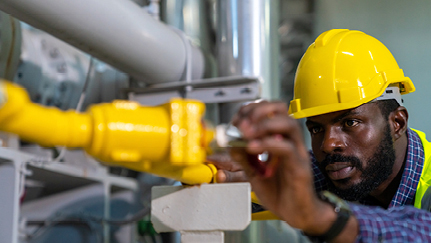Use gas detectors to check for toxic fumes and add ventilation when needed.
Subscribe to our newsletter for timely content in your inbox

Most fatalities in confined spaces are the result of atmospheric problems. That's why it's crucial to continually check for toxic fumes with a gas detector and introduce ventilation when needed.
Atmospheric monitoring is the first and most critical rule. Relying on your sense of smell isn’t sufficient. You need a gas detector. Fact is, some hazards have characteristic odors and others do not. Even when you can detect the presence of a hazard, you cannot determine its level.
Confined space atmospheric monitoring should routinely include oxygen concentration and flammable gases and vapors. Occupational Safety and Health Administration (OSHA) regulations require the oxygen concentration to be between 19.5% and 23.5% and flammable vapors or gases to be below 10% of the lower explosive limit (LEL).
Recognize that regulatory standards provide only minimal protection. Best practices dictate that any variation from normal (20.9% oxygen and 0% LEL) should be investigated and corrected prior to entering the confined space.
When atmospheric problems exist, you must correct the condition prior to entry. Forced-air ventilation is generally the most effective approach for confined space entry operations. This technique dilutes and displaces the atmospheric contaminants in the space.
Exhaust ventilation works best when a single-point source, such as welding, is the cause of the atmospheric contaminant.
Introduced air must be fresh. Use caution to avoid introducing hazards such as having the inlet of the ventilation set up too close to a source of toxic fumes, such as vehicle exhaust.
Sufficient volume for the size of the space must be used. Consider the length of duct and the number of bends in the duct, as they can both significantly reduce airflow.